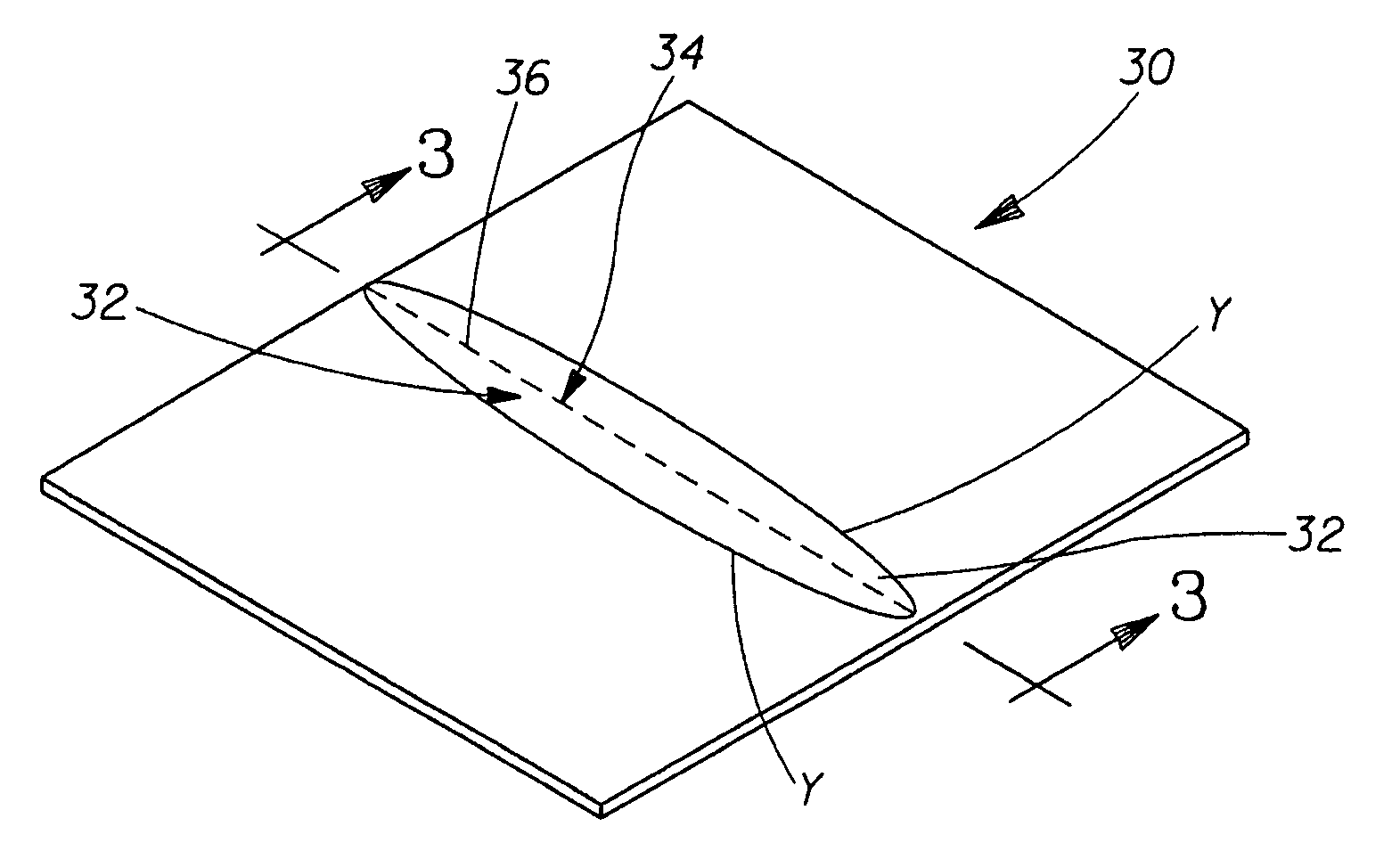Fibrous structures comprising a region of auxiliary bonding and methods for making same
a technology of auxiliary bonding and fibrous structure, which is applied in the field of fibrous structure, can solve the problems of fibrous structure, fibrous structure, and dust problems, and achieve the effect of reducing the amount of dust generated
- Summary
- Abstract
- Description
- Claims
- Application Information
AI Technical Summary
Benefits of technology
Problems solved by technology
Method used
Image
Examples
example 1
[0101]A reference sanitary tissue product is created by making a two ply fibrous structure suitable for converting into toilet tissue by laminating plies of through-air-dried paper fibrous structures on a toilet tissue converting line. Approximately 1″ wide bands of pressure sensitive hot melt adhesive are continuously applied to one of the fibrous structures on 4.5″ centers and the two fibrous structures are passed through a combining nip to laminate them into a two-ply fibrous structure. The combined fibrous structure is perforated into 4″ sheets using perf blades having 99 binding sites (i.e. gaps) each 0.011″±0.001″ wide per 4.5″ roll acting against a rotating anvil roll. The angle of entry of the web path into the perf blade anvil nip is positioned so the web only contacts the anvil roll at the point of minimum clearance between the perf blade and anvil roll. The perforated fibrous structure is then wound into logs on 1.71″ cores until 200 sheets are accumulated on each log. Th...
example 2
[0102]To illustrate one aspect of the present invention, the fibrous structure and sanitary tissue product-making of Example 1 is repeated except a slot extruder is positioned to uniformly coat the anvil roll with STP® oil treatment. STP® oil treatment is a product of Armor All / STP Products Company of Oakland Calif. and is a mineral oil containing an olefin co-polymer which serves to make it a low migration lubricant (an auxiliary bonding agent). As the perf blade contacts the fibrous structure, the fibrous structure is forced down to the anvil roll and the oil is transferred into the fibrous structure covering the solid state disruption zone. The STP® oil treatment is added at approximately 3% by weight. The rolls are stored at room temperature for 6 weeks prior to testing for dispensing dust. At that time the width of the STP® oil treatment across the perfs is ⅜″ wide at maximum migration. Properties of this sanitary tissue product are shown in Table I, below.
[0103]
TABLE IExample ...
example 3
[0104]To illustrate another aspect of the present invention, fibrous structure product logs from Example 1 are conveyed to the log saw to saw 4.5″ wide sanitary toilet tissue product; however at this point the existing oiling mechanism of the PCMC R961 log sawing machine is utilized to deliver auxiliary bonding agent to the cutting blade for deposition to the saw cut area of the sanitary tissue product. The auxiliary bonding agent is a low migration lubricant (STP® oil treatment). It is delivered continuously through the oiling mechanism at a rate sufficient to deposit 3% by weight to the sanitary tissue product. The transfer of the lubricant to the solid state disruption zone (the saw cut) occurs as the blade passes through the log, the lubricant is deposited onto the cut surface. Example 3 is observed to have much lower dust arising from the saw cut solid state disruption zone compared to Example 1.
PUM
| Property | Measurement | Unit |
|---|---|---|
| density | aaaaa | aaaaa |
| pressure | aaaaa | aaaaa |
| temperature | aaaaa | aaaaa |
Abstract
Description
Claims
Application Information
 Login to View More
Login to View More - R&D
- Intellectual Property
- Life Sciences
- Materials
- Tech Scout
- Unparalleled Data Quality
- Higher Quality Content
- 60% Fewer Hallucinations
Browse by: Latest US Patents, China's latest patents, Technical Efficacy Thesaurus, Application Domain, Technology Topic, Popular Technical Reports.
© 2025 PatSnap. All rights reserved.Legal|Privacy policy|Modern Slavery Act Transparency Statement|Sitemap|About US| Contact US: help@patsnap.com



